Quick View
Game: Astalon: Tears of the Earth
Release Date: June 3, 2021
Price: $19.99
Rating: Teen
Platform: Switch, PlayStation, Xbox, Windows, Linux, Classic Mac OS
Geek to Geek Media was provided with a review copy of this title.
Let's get some full disclosures out of the way at the top. First of all, I haven't actually finished Astalon: Tears of the Earth. I got right up to the final boss before starting to write this review. The game warned me that I was approaching the end, and I absolutely bailed. There is so much still that I haven't seen that I didn't want the game to end! Second, I did have a chance to sit down and chat about this game with its creators when I was only a few hours into it. While both of them were super cool and I really enjoyed that conversation, it didn't substantially change my view of the game. I already loved it.
And that, I suppose, is the third disclosure I need to make. I absolutely love this game. Astalon: Tears of the Earth is, in nearly every possible way, entirely my jam. This game takes the absolute best traits from Metroid, Castlevania, Megaman, and Dark Souls, and mixes them all together into an absolute instant classic. From the atmosphere to the moment-to-moment gameplay to the way that it builds long-term progression, this game is darn near perfect.
I'll do my best to tell you about what makes this game work and where it's got a few problems. The thing is, if you are in any way intrigued by a retro-stylized action platformer, you can just stop reading now and go buy the game already. It's great!
Three Characters on a Quest

The basic setup for Astalon: Tears of the Earth is that three characters are trying to find out why their village stream has suddenly become poisoned. A few cutscenes at the start of the game show them venturing across a post-apocalyptic wasteland until they find a dark tower. Inside, they have to battle their way through tons of monsters as they try to find a way to unsully the stream.
Having three characters available to use at the start of the game is the first really interesting thing Astalon does. Each of these characters operates on the same basic physics but has a unique attack. What that means is that you can use any of them to conquer platforming challenges early in the game, but you might need to find a campfire and switch characters to get past other obstacles. Specifically, the blue knight's sword can cut through vines. Throwing a magical orb as the wizard can activate switches. The archer can wall jump. Bouncing back and forth between characters is really fun, and different players will probably pick favorites depending on if they prefer close-, medium-, or long-range combat.
Character Growth
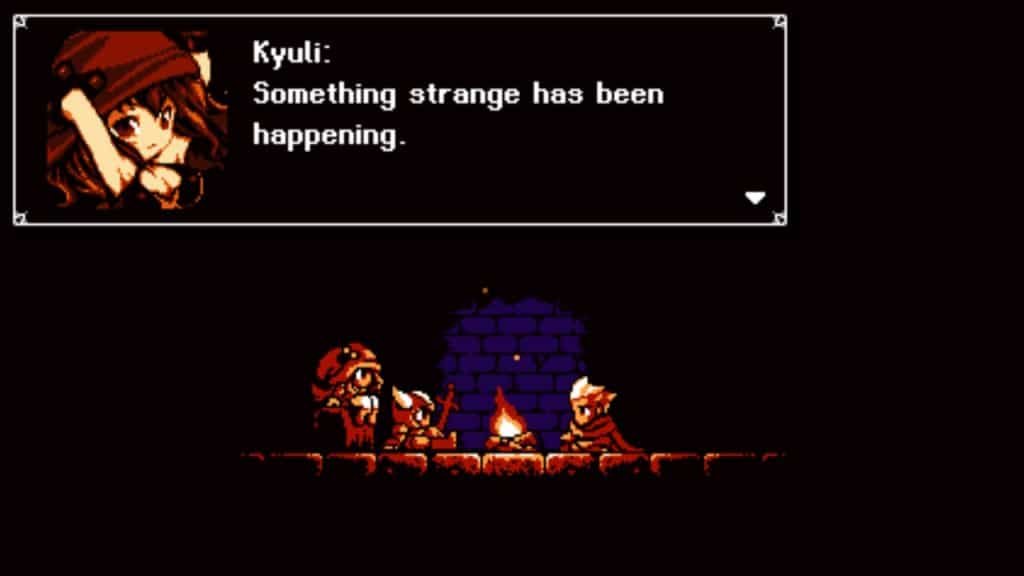
As you progress through the game, you'll find items that tweak the way the characters feel even more. Your knight gets the ability to dash. The archer gets the ability to wall jump infinitely. A strange familiar starting following the wizard around. You can still mostly play as anyone you want – barring those specific obstacles – but it's nice that the characters become more unique as you go.

You also learn more about your characters through story sequences that unlock as you play. Some of these are triggered by visiting campfires. Others occur throughout the tower, or are purchased from the in-game shop.
For fear of spoilers, I'm not going to dive deep into any other ways that this system evolves over the course of the game. To put it simply, the idea of having multiple characters available to you starts neat and just gets cooler and cooler as you make your way further into the tower.
The Tower

Like any good gothic horror story, the world of Astalon: Tears of the Earth is one of its primary characters. The tower you explore in this game might be my favorite Metroidvania environment I've ever come across. The map is big and sprawling, with tons of secret passageways, hidden items, and shortcuts to unlock. The first map I unlocked seemed huge, and looking back at it now I can't help but laugh at how much I didn't know.
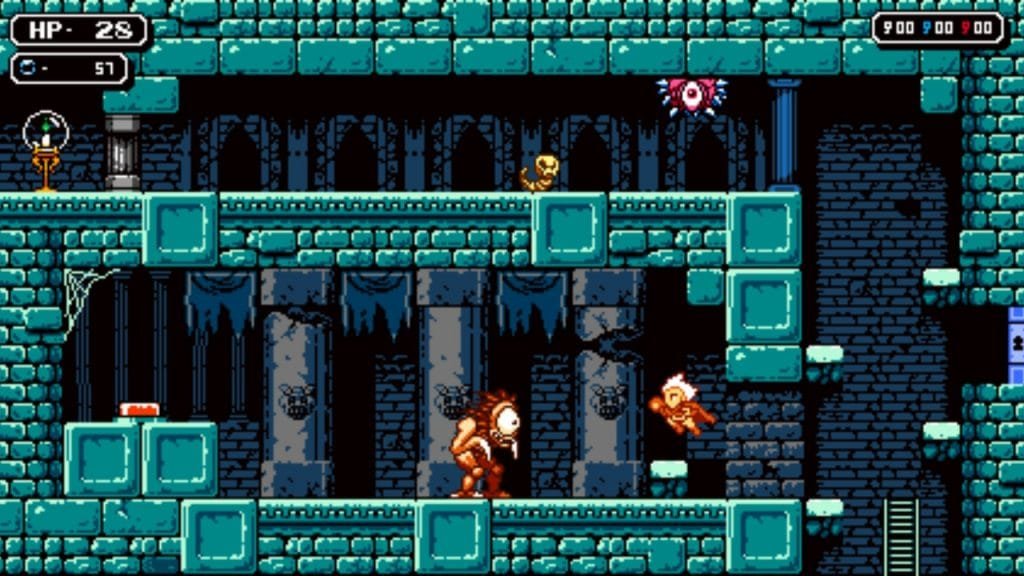
It's also beautifully realized. The pixel art in this game is absolutely wonderful, both in environments and enemies. A lot of the rooms you explore have creepy statues looming in the background. They don't add anything to the gameplay but really drive home the spooky atmosphere. The enemies, on the other hand, are one of the best gameplay aspects in Ascalon. There's a massive bestiary, so even though you'll get to know enemies' patterns really well by facing them over and over again, you'll also constantly be finding new foes.
All of this makes the tower feel alive and energetic and exciting.
What Happens When You Die
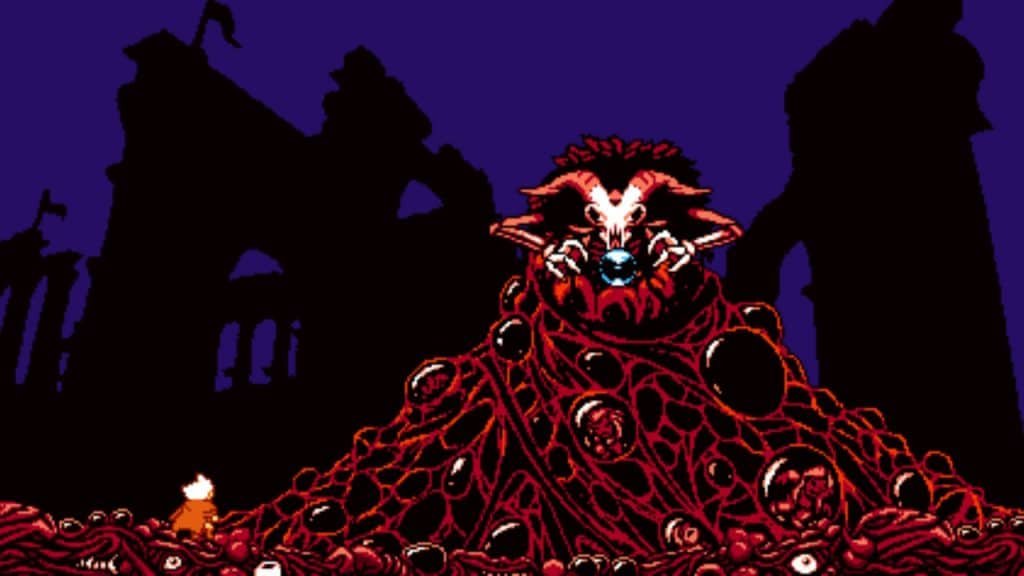
Let's talk about dying. The official description for this game starts with “Death is Only the Beginning”, which immediately made me think this was a roguelike. It's absolutely not. This is a huge hand-crafted world that you are constantly progressing through. The hook with dying is that each death brings you an opportunity to buy upgrades. Some of these are character-specific, like increasing the attack speed of the knight, while others will impact all three characters.
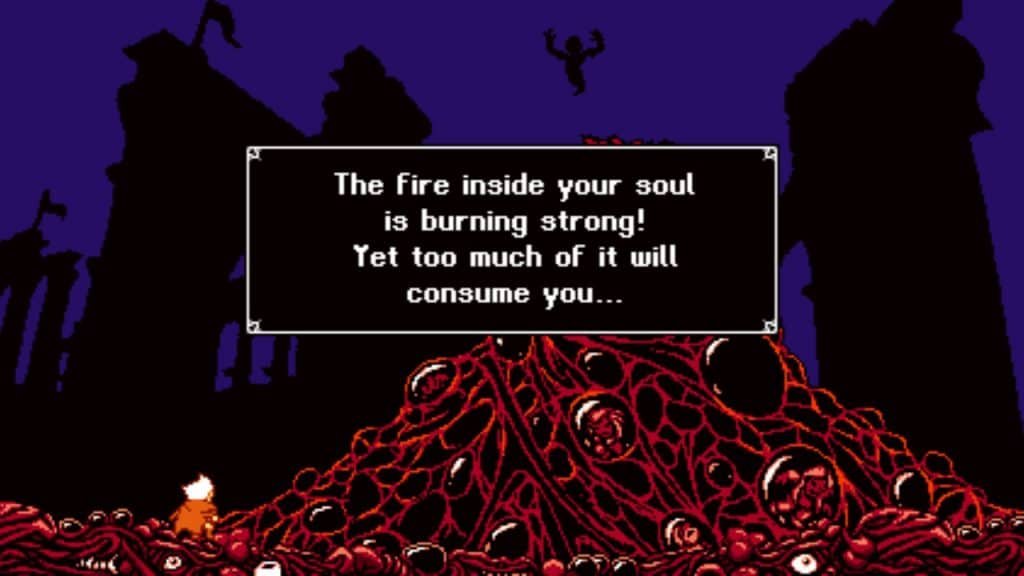
The “upgrade when you die” concept works well, but the shop menu was one of the few frustrations I had in this game. The issue is that most of the upgrades have vague names, and don't tell you what they do until you buy them. Even then, when you do buy one it'll sometimes have a description that still doesn't quite tell you what it does. I think the idea is that this should contribute to the mysterious atmosphere, but mostly it just made me stick to the basic, easy-to-understand upgrades.
Dying is Just Fine
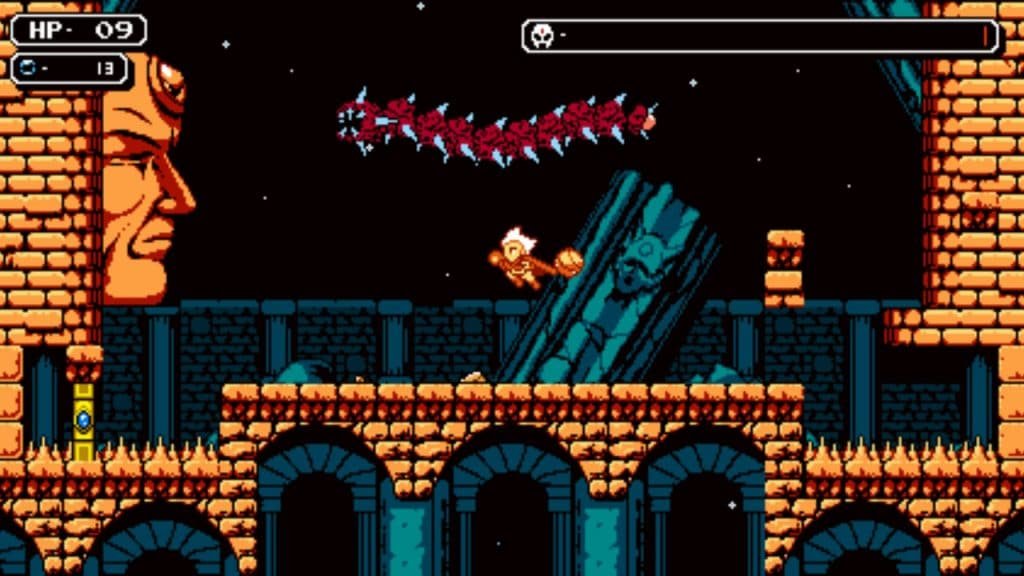
Once you finish shopping, you start right back at the front door of the castle. There are some plot reasons for this happening that I'm not going to spoil, but it's super neat. You then start exploring again, but any shortcuts you unlocked before will still be there. The biggest shortcut is an elevator system that can let you jump straight to a further area.
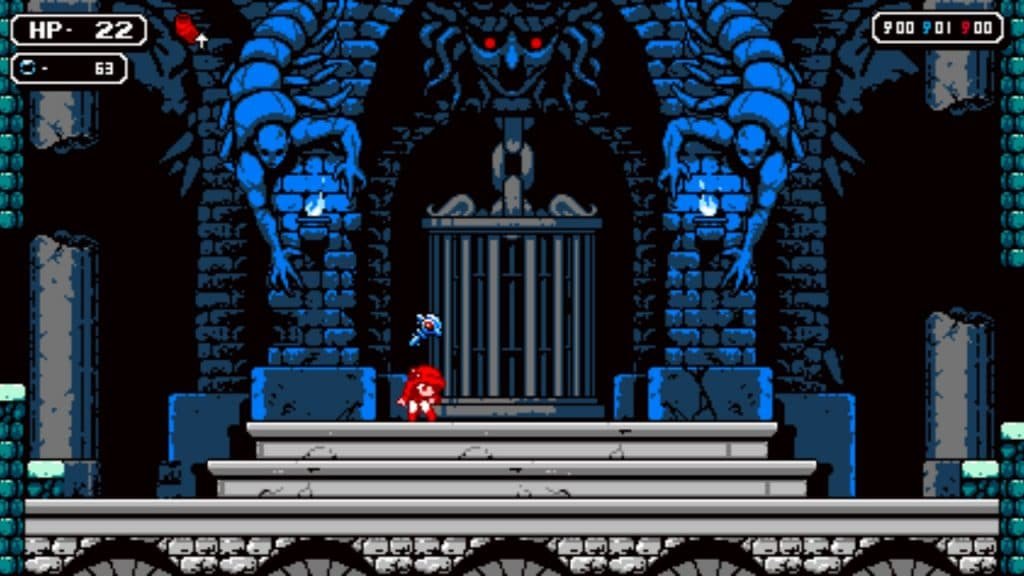
The shortcuts are my favorite aspect of this game. Each time I ventured in my hope was that I found some circuitous route through a bunch of obstacles that would end with a button that would let me skip that section next time. This game starts you at the very beginning every time you die, but the shortcuts you've unlocked stay open. This means each “run” lets you get further faster, as long as you are finding and opening shortcuts along the way.
Between the ability to pick up upgrades and not losing any unlocked shortcuts, this game never makes death feel too punishing. Which is good, because I died a lot.
A Few Bugs Don't Make an Infestation
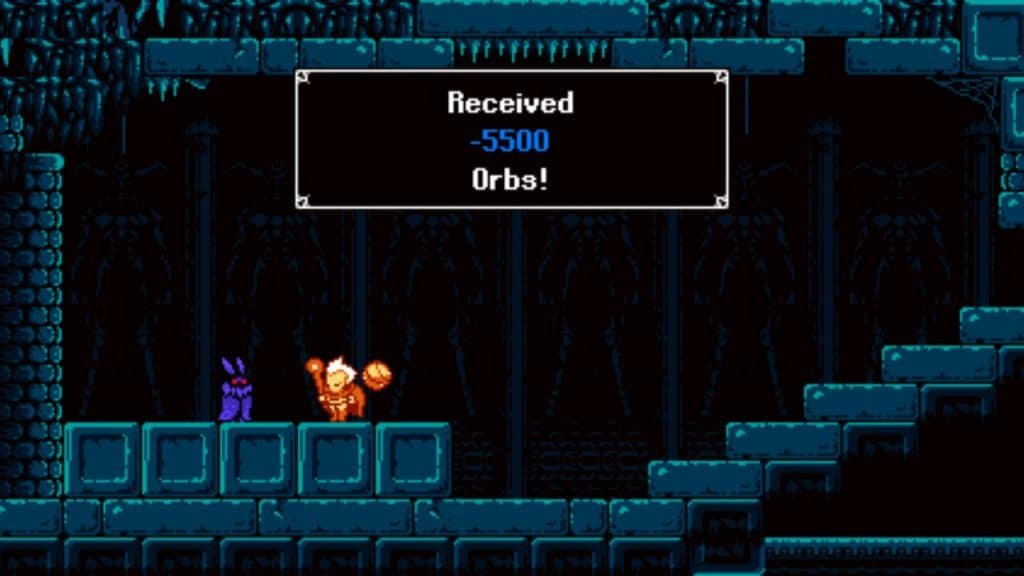
I think I've hit most of the big things that make me love this game, but it's not without its flaws. There have been few different bugs I've encountered that have been pretty annoying. I've lost tons of orbs, only to be given them back a while later. Once my character just disappeared from the screen, meaning I had to restart the game. There's a ladder late in the game that's glitched halfway through, so if you don't jump as you climb it drops you into a torch on an entirely different screen.
I have fond memories of sharing tricks on how to break enemy AI when I was a kid. There were sequences you could do that would trick a boss in to aiming the wrong direction, or a specific pixel you could stand on where they could never reach you. I've run into a few of these scenarios in Astalon. Since things like this were so common in old Castlevania games, it almost feels intentional. Beating a boss because they get stuck shouldn't happen, but it's fun when it does. Weird enemy issues like that didn't happen often enough to be game-breaking, but they did happen often enough to feel like a bit of a pattern.
The developer has been super active in talking to the community about these issues in their discord, so I'm hopeful that they'll all be addressed soon.
Other Issues

I also ran into a few quality of life issues with the design in this game. First is the vagueness of some of the meta-text in this game. That includes the shop interface issues I talked about above and the text that kept me from taking on the final boss. I've actually checked with the Discord since I started writing this review, and it turns out I could beat the final boss and keep this save, but it's a shame that the game doesn't tell me that.
Finally, there's an item I found part-way through the game that is explicitly designed to help me find secret areas. Basically, whenever you are in a room that has a hidden entrance/exit, this thing lights up to let you know. The problem is that you can only see your items by pausing the game. So, in order to use this item effectively, you've got to pause every single time you enter a room in order to see if there's a hidden passage. It'd be a whole lot nicer if it was just part of your HUD.
I'm really hopeful that a lot of these issues will be tweaked by the developer soon. None of them made the experience of playing Astalon awful, but each of them was a bit annoying.
Final Thoughts
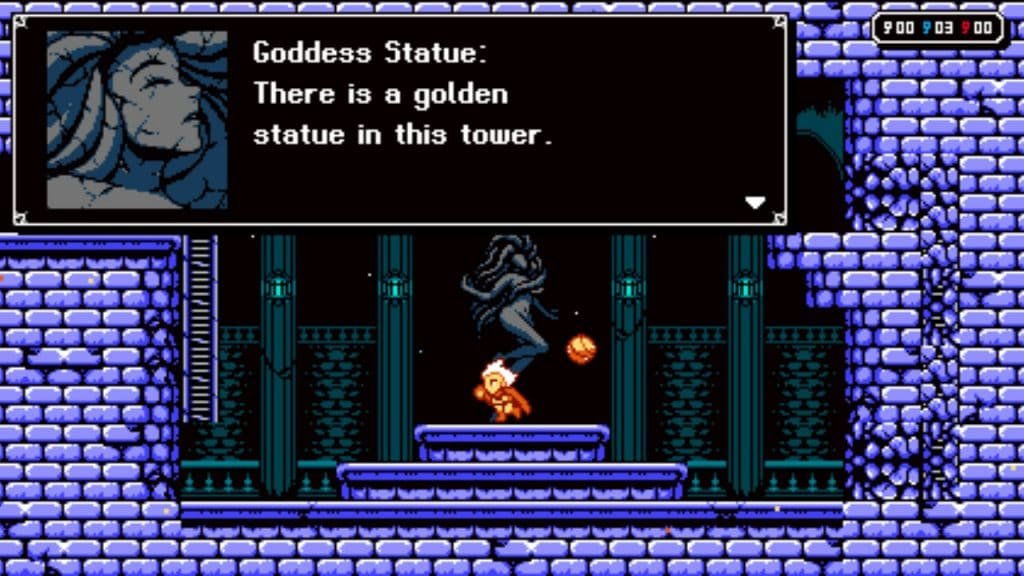
I cannot recommend this game enough to fans of Metroidvania games, to fans of action platformers, to fans of retro games. It's just a wonderfully realized world that is difficult as heck, but never discouraging. Like Shovel Knight, it pulls off the incredible trick of feeling how you remember games feeling when you were a kid, while also being an absolutely modern experience. Astalon: Tears of the Earth is a love letter to retro games, and is one the best 2D-action-platformer-exploration games I've ever played.
The game even starts off with letting you choose how much of an old-school blur you want on the crisp pixel art!
It's also got a ton of content. My in-game clock shows 16 hours to get to the final boss, but that's probably including a full hour or two of the game being on and paused while I was hanging out with my kiddo. Still, even if you breezed through it under ten hours, chatter online leads me to believe there's a bit more to do once you finish the story.

